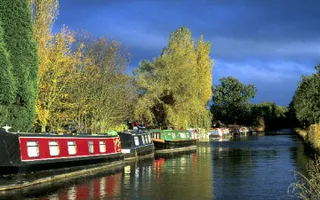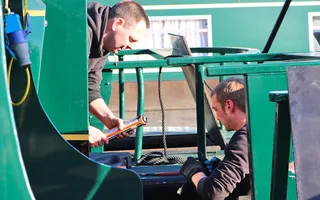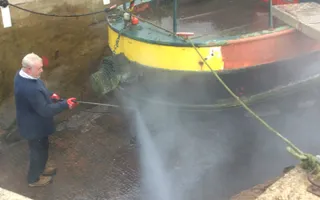You'll find it on the side of the ‘swim' (the curved side section at the back of the boat) and will have two large coolant hoses connected to the top, bottom and opposing ends of the tank (if installed correctly). There may be two tanks, one either side of the ‘swim'.
Keel tank maintenance
Marine engines use what's called a keel tank to remove heat from the engine's coolant (similar function of a radiator).


How to bleed air
Before you start any work, make sure the engine is cool and the engine room is safe to enter. Never do work on a hot cooling system.
Unfortunately, there are many variants of bleed points built into the design of these tanks. While unique to the boat builder who installed them, they do share some similarities. For instance, they'll all be at the highest point on the tank and usually are located directly above the top ‘hot' pipe feeding hot coolant to the tank.


If the air pocket is particularly large, keep topping the engine up with coolant to ‘bleed' the air from the tank. If you allow the engine to drain without top ups, it will introduce air locks directly into the engine, which may cause it to overheat once re-started.
Once the air ‘bleeds' from the tank a few times you will get an idea of the maintenance intervals. To begin with I would recommend you bleed the tank once every 200 running hours. When you've done this a few times you may increase or decrease the frequency to suit your own needs.
With thanks to River Canal Rescue for their expertise.
Last Edited: 5 July 2024


Stay connected
Sign up to our newsletter and discover how we protect canals and help nature thrive




